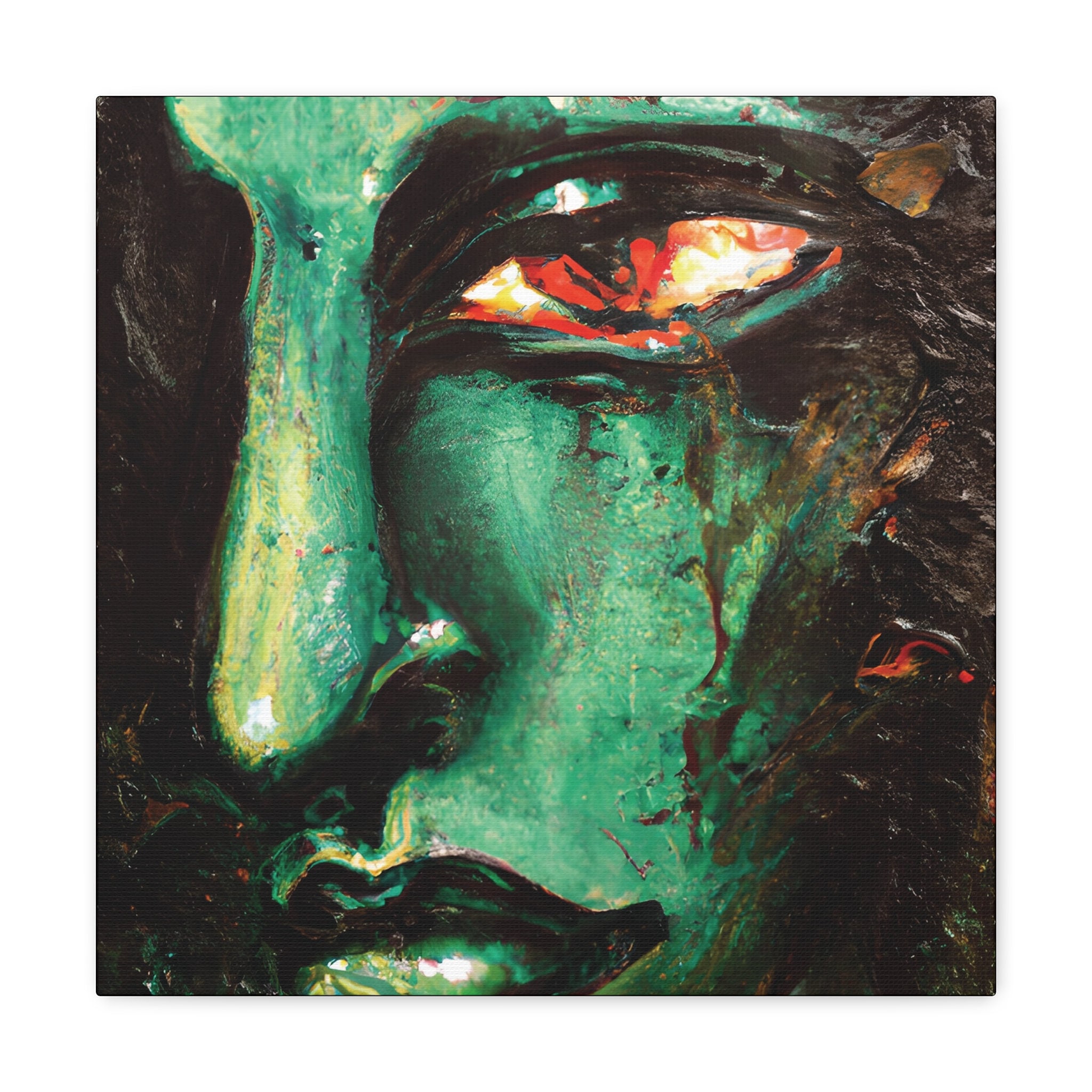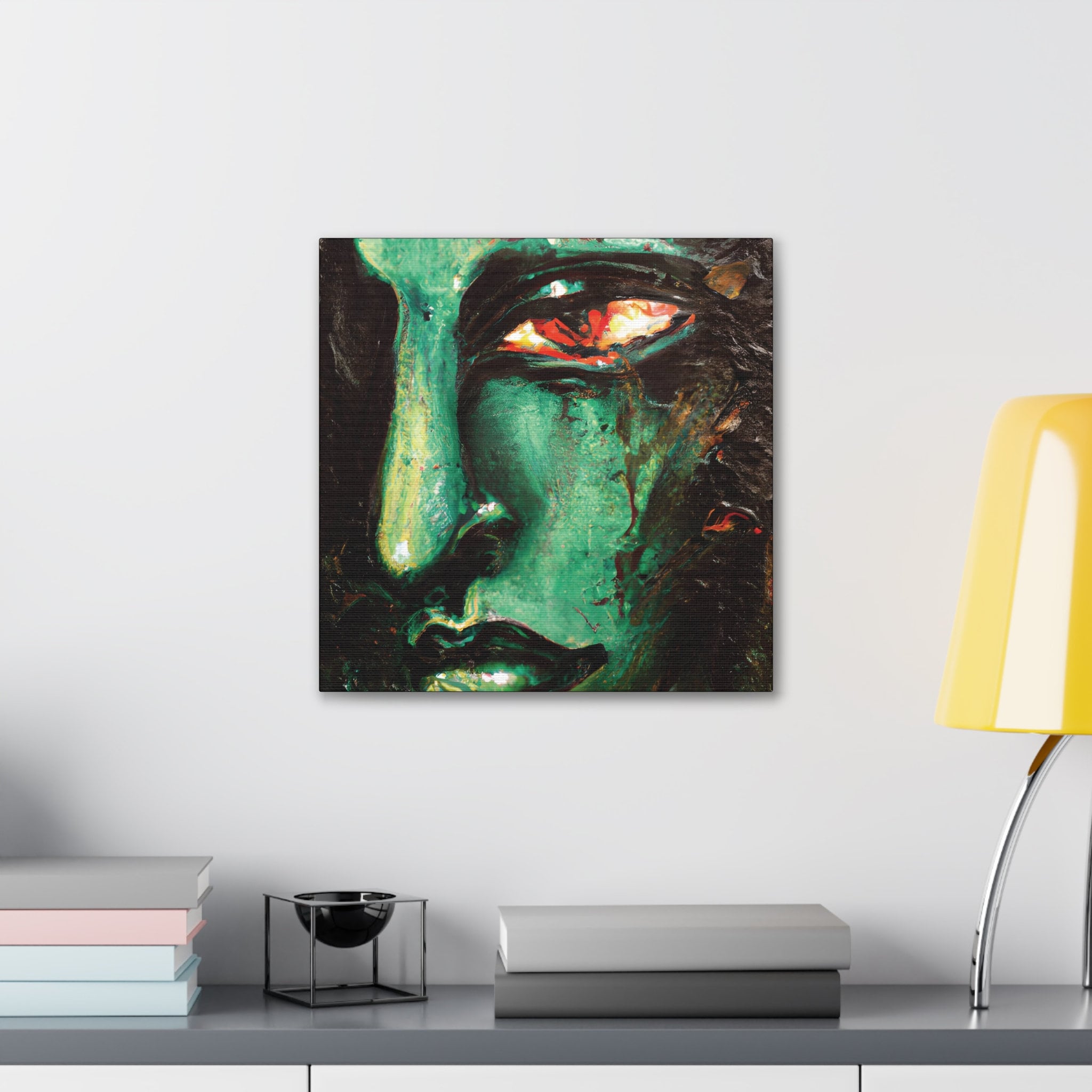Liberty Weeps, Canvas Print, Statue Of Liberty, Patriotic, Patriotism, Emma Lazarus, The New Colossus, Immigration
$26.00
Limited time only! 15% off Discount Code for this listing: ORIGINALART15OFF
Many of the canvases in my shop are also available as high-quality posters, both framed and unframed. Please contact me for details.
The title "Liberty Weeps" speaks volumes. A poignant and tragic moment has been captured. It is a somber reflection of how Lady Liberty, a symbol of hope, freedom, and the American Dream, now mourns.
The rusty tears are not only a nod to the aging statue and the natural weathering process but also symbolize the erosion of values and ideals. The redness in her eye can be seen as an indication of the pain she feels witnessing the drift from the principles that once guided the nation.
The concealed right eye represents both the obscured vision or ignorance of a nation turning its back on its foundational ideals and the parts of the nation's history and actions that remain in the shadows, unseen or unacknowledged.
But more than anything, it's the unspoken resonance with Emma Lazarus's poem "The New Colossus" that drives the painting's emotional depth. The melancholy seen in Lady Liberty's face suggests that the welcoming message inscribed at her base — an invitation to the tired, the poor, the huddled masses yearning to breathe free — has been forgotten or forsaken.
In "Liberty Weeps," the painting makes a bold statement about the evolving national ethos and posing a silent question to its viewers: What have we become?
A perfect addition to every room! This canvas is made from a finely textured artist-grade cotton substrate which consistently reproduces image details with outstanding clarity and detail.
Sizes:
• 6" wide x 6" high (Perfect size for desk or countertop)
• 16" wide x 16" high [Images in the picture gallery are for this size]
Canvas specs:
• Material: Ultra smooth, 100% cotton rag canvas
• Material quality: Finely textured artist-grade cotton substrate
• Surface finish: Matte
• Cotton rag fabric weight: 400 GSM (11.80 oz/y²)
Wrapped canvas frame specs:
• Wrapped canvas frame thickness: 1.25"
• Framing quality: Beautifully finished, taut corners that give a clean and crisp look
• Hanging hardware: Attached
Ink specs:
• Canon 12-color Aqueous ink
• Acid free, archival quality
Shipping from United States
Processing time
1-7 business days
Customs and import taxes
Buyers are responsible for any customs and import taxes that may apply. I'm not responsible for delays due to customs.
Payment Options
Returns & Exchanges
I gladly accept returns and exchanges
Just contact me within: 14 days of delivery
Ship items back to me within: 30 days of delivery
I don't accept cancellations
But please contact me if you have any problems with your order.
The following items can't be returned or exchanged
Because of the nature of these items, unless they arrive damaged or defective, I can't accept returns for:
- Custom or personalized orders
- Perishable products (like food or flowers)
- Digital downloads
- Intimate items (for health/hygiene reasons)
Conditions of return
Buyers are responsible for return shipping costs. If the item is not returned in its original condition, the buyer is responsible for any loss in value.
Frequently Asked Questions
What is All-Over-Print (AOP)?
All-Over Print (AOP) is a printing method that uses dye-sublimation to print a design onto polyester. During the dye sublimation process the dye is absorbed into the fabric. Since, it is not printed on the surface, like most t-shirts, it provides for a fantastic soft-to-the-touch feel and superior breathability.
AOP is a more time consuming method than screen printing or direct-to-garment (DTG) printing, so the prices are higher and the production times are longer, but the results are most definitely worth it.
Advantages of AOP:
The design won't peel off, unlike typical screen printing.
The design is part of the fabric of the item, so it will last as long as the item does.
The intensity of color is often unmatched.
What is Giclée?
Giclée (pronounced zhee-CLAY or often gee-CLAY) is a printing process that creates a museum quality, archival print. Special acid-free, paper is printed with fade resistant ink using a state-of-the-art, large format inkjet printer.
What is a gallery wrap canvas?
Gallery wrap is a style of displaying a canvas that doesn't show any visible staples or nails holding the fabric to the wooden stretcher bars. This style of canvas is intended to be hung unframed.
What is a gallery mirror wrap canvas?
Mirrored edges (mirror wrap) is used to show the whole image on the main surface, rather than printing the edges of the image on the sides (image wrap) of the canvas frame. It is usually used when there is necessary detail on the edges of the image. Image wrap is used when the focal point of the image is in the center.





